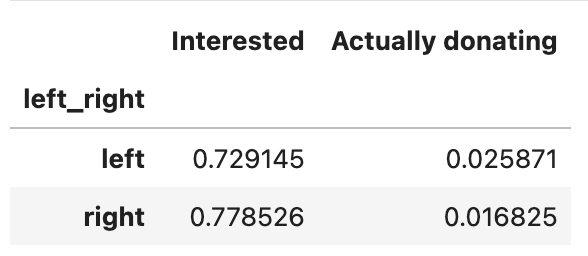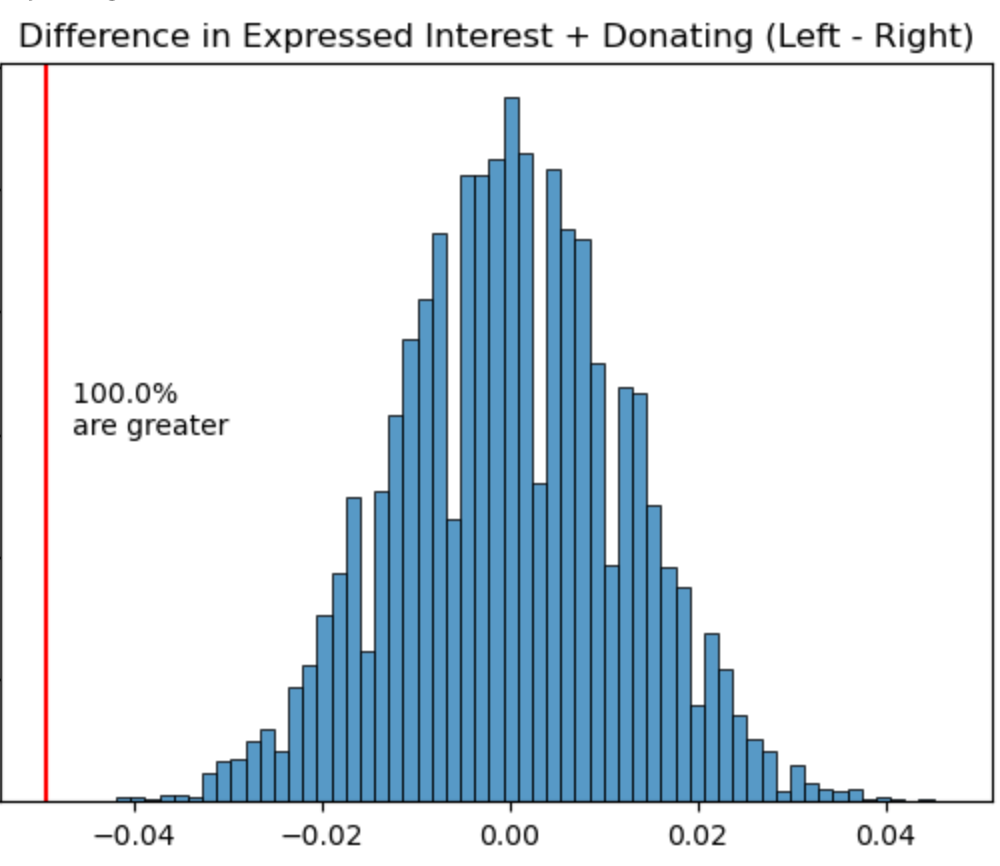Notes
I did a bit of data analysis based on ‘s last post. He pointed out that there were differences between (at least intended) kidney donors in the ACX survey based on political affiliation. Looking at the numbers, I wanted to verify whether they could plausibly just be the result of random variation. In order to check, I shuffled left-right designations on the dataset to simulate the distribution of samples under the ‘null‘ hypothesis that there was no difference on the basis of political affiliation.
Looking at the survey results directly, it seems that if you just look at expressed interest in donating, there is a rightward bias (people on the right are more likely to be interested) while if you look at actual donors (or attempted/intended donors) there is a leftward bias (people on the left are more likely to donate).
Checking the results against the ‘no difference‘ hypothesis, it looks like the difference is real on both questions. You can see on both distributions that the real outcome was pretty unlikely if there is no difference.
Of course, many caveats/confounders potentially apply so I wouldn’t take this too seriously.



Dive into your interests
We'll recommend top publications based on the topics you select.
